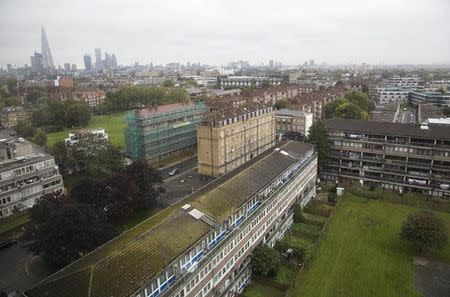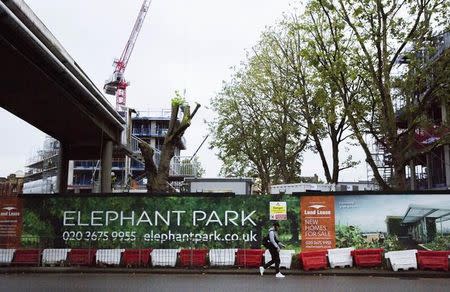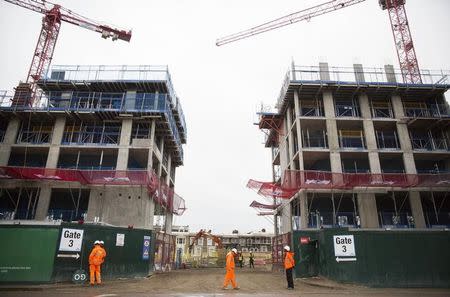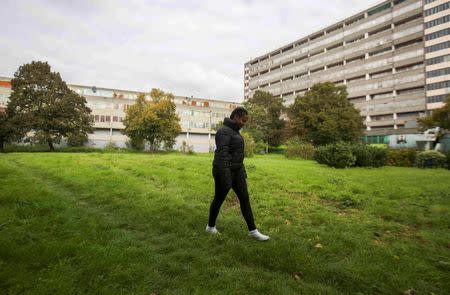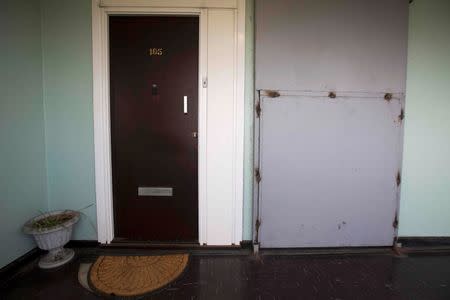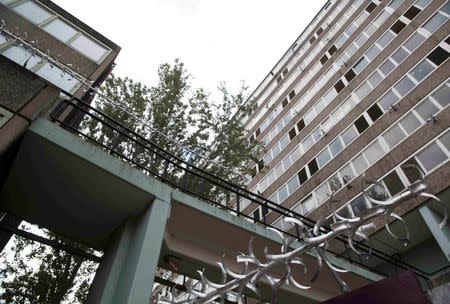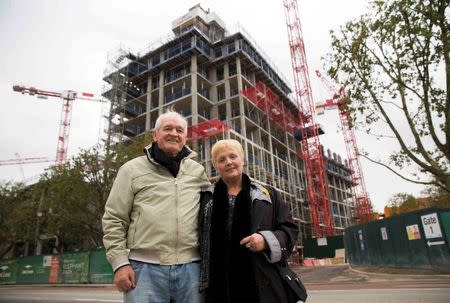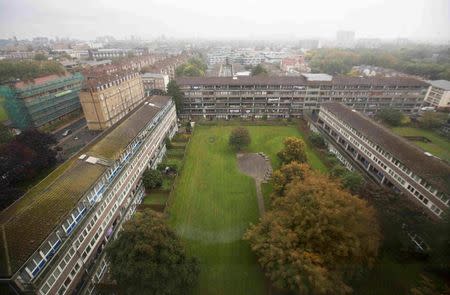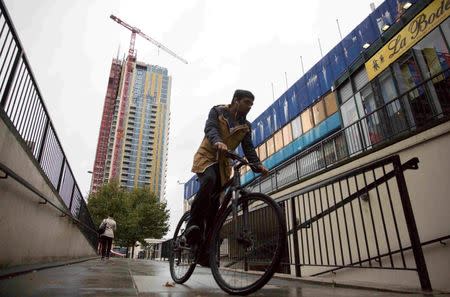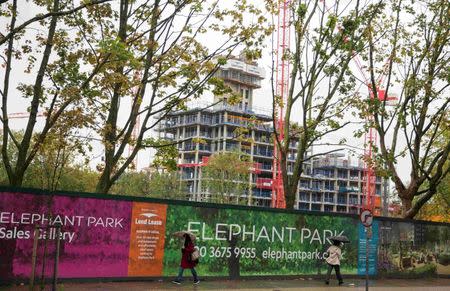As gritty patch of London upgrades, poorer locals pushed out
By Estelle Shirbon LONDON (Reuters) - Janet and Larry Colfer like to go for Sunday lunch at an old haunt in Elephant and Castle, where they lived for 36 years until their run-down social housing estate was knocked down to make way for smart new apartment blocks. On their way, the retired couple pass hoardings advertising Elephant Park, the new quarter that will replace the old Heygate Estate. These depict an urban idyll full of smiling young residents relaxing in gardens bathed in dappled sunlight. "It makes me sad when I see it because all my memories were tied up there. It was a lovely community, and now we've all been scattered," said Janet, 68, a former waitress, shop worker and bingo caller who raised her five children on the Heygate. Elephant and Castle is in "zone one", the central region on London's transport map, just minutes away by train or bus from the business, shopping and leisure districts in the heart of the capital. Now, the Heygate diaspora is dotted around Greater London and beyond. Social tenants, the majority of residents, were rehoused by the local authority, Southwark Council, mostly elsewhere in the borough. The Colfers ended up four miles to the south. The area is pleasant but they miss their old home and community. Worst-hit were the just under 200 people who had bought homes on the Heygate. They were required to sell their properties to the council for amounts that were not enough to buy new homes locally. Many left London, or moved to its outer boroughs. In the past decade, 50 social housing estates with 30,000 homes have been regenerated across London. The total number of homes on those locations has doubled, but with a net loss of 8,000 homes available for the lowest social rents. Supporters say regeneration schemes create more and better homes in a city facing a housing shortage and eye-watering property prices. Objectors say they lead to social cleansing, with poor Londoners priced out as neighborhoods go upmarket. MILLION-POUND APARTMENT With its monolithic blocks and graffitied stairwells, the Heygate had deteriorated over time, with crime and social problems rising. In its latter days, it attracted many film crews looking for a backdrop for tales of urban dystopia. Centred around two giant roundabouts and a tatty shopping center pervaded by the smell of frying fat, Elephant and Castle remains down-at-heel, but a three-billion-pound ($4.6-billion) regeneration plan will change it beyond recognition. Elephant Park is due for completion in 2025. The developer, Lend Lease, is already selling flats that have yet to be built, at prices that were previously unimaginable in this area. One 21st floor, two-bedroom apartment is on offer at over one million pounds. One The Elephant, a 37-storey tower that is nearing completion, has been almost entirely sold, partly to foreign investors, and some of the properties have already been flipped, or resold, for a hefty return, according to local estate agents. "I'm aware that some of the properties that have been sold have been remarketed. We don't really want that to happen but there's a limited amount of control we can actually have," said Rob Heasman, Elephant and Castle head of project at Lend Lease. These types of transactions are controversial in London, where young and low income residents struggle to get on the property ladder while investor-buyers snap up new housing. Many are from overseas, and do not always occupy the properties. "Whilst we do prioritize selling in the UK it's important that we are selling globally. The real hurdle is getting schemes funded. We need to get pre-sales in order to get schemes off the ground," said Heasman. AFFORDABLE HOUSING? The regeneration is driving up prices in the area, not just in the new buildings themselves. "Affordability has been affected, there's no doubt. As a first-time buyer, you're going to struggle, but that's London for you," said Sean McMahon, sales director at Field & Sons, a local estate agency. The idea of a property boom in Elephant and Castle is shocking to Terry Redpath, a former home-owner on the Heygate. Redpath, 68, whose family had been in the area for three generations, received 172,000 pounds for his three-bedroom home and had to move 13 miles away to Bexley, on the edge of London. "To add insult to injury I have recently received emails asking if I would like to express interest in flats being marketed at 550,000 pounds, to be built almost on the exact location that my maisonette once stood," he said. The Heygate had 1,200 homes. Lend Lease says Elephant Park will have roughly 2,500, of which a quarter will be officially classed affordable. That category will be split halfway between rental homes, with rents capped at 50 percent of market levels, and homes available under part-buy, part-rent schemes. Local housing campaigners say these homes will remain out of reach for those on the lowest incomes. Mark Williams, Southwark councilor in charge of regeneration, said the homes would be of far better quality than what existed on the Heygate, and residents of all income levels would benefit from improved local infrastructure and services. "What we're trying to create at Elephant and Castle is a genuinely mixed community across the wider area," he said. But many uprooted ex-residents of the Heygate see no place for themselves in this vision of a brighter Elephant and Castle. "I think they just want people who can afford the prices eventually, not the likes of ordinary people like myself and my husband," said Janet Colfer. (Editing by Peter Graff)

